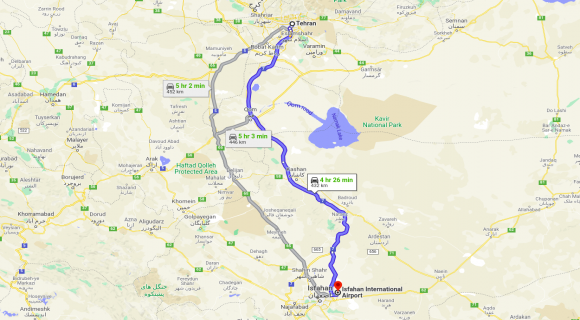Top Iranian food

Persians have always been renowned for their hospitality, whether it be as a tribesman providing a tired traveler with rest and refreshment or as an urbane city inhabitant serving out a delicious meal to his visitors.
Tradition dictates that only the best food is offered to guests or visitors, and that it is always done in the most generous way possible. The food offered in Iran hasn't changed all that much throughout the years, according to accounts of early visitors.
One of the oldest and most developed cultures in the world is influenced by the geography, history, and culture of Persia, which has created the variety of ingredients and culinary techniques.
Despite being repeatedly invaded, Persia, or Iran, has managed to hold onto its culture, language, and sense of self over the years.
The country's enormous size comprises a broad range of regional cultures, customs, lifestyles, and languages, in addition to an astonishing variety of landscapes and temperatures.
The northern regional cuisine has straightforward, fresh flavor and fragrance elements, and it prefers sweet and sour flavors to spicy ones. The season for fresh ingredients is significantly shorter and the variety is not as wide further south in the regions bordering the Persian Gulf where the temperature is drier.
Additionally, there is a long history of trading via maritime channels with nations like India that are rich in spices. The resultant cuisine has a richer flavor profile than that of the country's north and features extended notes of spices, tamarind, and chilies.
In addition to the classic Iranian dishes prepared throughout the nation, most cities and villages have their own regional cuisines as well as Persian food specialties.
Persian cuisine is broken down into many categories, such as Abgoosht and Dizi, Chellow, Stew, and Kebab.
Here is a list of the top Persian dishes you should sample while visiting Iran. So obtain an Iran visa and travel to Iran!
Top 10 Iranian food

What sort of food is consumed in Iran? Iranian cuisine, which incorporates dishes from numerous ethnic groups, is one of the greatest illustrations of the country's ethnic variety.
This adaptability may also be seen in the many food categories. Everything from stews, soups, and pastries may be found among the wonderful dishes.
To enquire, what food is consumed in Iran? It appears to primarily consist of the ingredients rice, meat, veggies, and nuts. In Iran, herbs and spices are frequently added to meals.
Lists of the top Iranian meals are challenging since the Iranian diet is so diverse. Nevertheless, for the sake of this post, we'll show you some of the regional dishes that are generally regarded as the greatest.
Khoresht e fesenjan
Every Persian wedding meal must include this famous stew. Although usually cooked with duck, khoresht e fesenjan can also be prepared with chicken or lamb.
It is occasionally cooked with fish in the northern part of Iran. Although it is a very simple khoresht to prepare, it must be cooked gently in order for the flavors to meld together.
The liquid should have a thick, creamy consistency and be nearly black in color. The flavor is peculiar because it mixes pomegranate syrup's sweet and tart flavor with the nutty flavor of ground walnuts.
Zereshk polow
Iranian cuisine shares many elements with central Asian cuisine, making them comparable. In Iran, like in central Asian nations, rice is one of the most popular ingredients.
It is rice that has been cooked with chicken, red berries, barberries, and saffron. It has a savory flavor and a soft texture that make swallowing easier. In addition, components like onion, pepper, turmeric, sugar, and others are used to make Zereshk Polow.
Dizi
The next item on our list is Dizi. In a special stone plate built for this use, stew called dizi is prepared.
That particular stone dish is what gave Dizi its name. It is a classic dish from Iran and is highly well-liked by the populace. Most often,
it is prepared for festivals and weddings. Lamb and chickpeas are the major components of the stew, which has a tomato base. It is warm and creamy.
It has a lot of calories because it is high in fat. As a result, you must consider if you can manage it cautiously or not.
Khoresht-e ghormeh sabzi
The sour and herb-filled Khoresht-e Ghormeh Sabzi is delicious. This dish is a national favorite in Iran and is suitable for both special occasions and family dinners.
Different areas have slightly different recipes. For instance, black-eyed beans are used in place of red kidney beans in the Azerbaijani variation.
Garlic and chilli are frequently utilized in southern recipes, while potatoes are occasionally substituted for beans in Shiraz recipes.
In this recipe, spinach is added against the grain to improve flavor and give the food a softer texture. Fenugreek has a flavor and scent of its own.
Tahchin

Iranian rice cake known as tahchin is made of rice, yogurt, saffron, eggs, and chicken fillets. In addition, you can substitute vegetables, seafood, or pork for the chicken fillets.
White rice makes up the second portion of tahchin, which is made up of two parts: the thin Tahdig portion, which is made up of the chicken fillets, saffron, and other ingredients in the bottom of the cooking pot. Tahchin is often made and served in restaurants without the white rice component.
Abgoosht
This recipe is filling and healthful, perfect for chilly winter days. It has a combination of complex carbs, protein, and fat, and when served with yogurt and fresh herbs as side dishes, it is a nutritious meal.
Historically a cuisine for the underprivileged, it has gained popularity in recent years for casual family meals.
In the past, it was prepared with the least expensive lamb chops and animal fat. Abgoosht was traditionally prepared in handcrafted individual clay pots in the ancient tea establishments and caravanserai.
The pot was filled with all the materials, a tiny amount of water was added, and the mud-sealed lid was then placed on top.
The pots were placed in the wood stove's ashes and allowed to gently cook. These days, higher-quality lamb parts like leg or shoulder shanks are preferred.
The broth is typically drained off and served as soup with bread cubes floating on top like croutons. With fresh herbs and warm flat bread, the pounded meat and beans are served.
Abgoosht's ingredients differ from region to region. The most popular variation just contains chickpeas and omits tomato paste or tomato purée. Potatoes, split peas, red kidney beans, and tomato purée are all ingredients in this recipe.
Although it is relatively simple to prepare, cooking it slowly is necessary for the flavors to intensify. Red kidney beans can be added a day ahead of time; when ready to serve, reheat it and add the saffron and lemon juice just before serving.
Ash Reshteh

Ash Reshteh, an Iranian soup, will be one of the most delicious dishes on this list. Around Nowruz, when Iranians mark the start of the new year, Ashe Reshteh enjoys a surge in popularity.
The vegetable-rich soup is one of Iran's healthiest foods. The main ingredients are noodles in the shape of spaghetti. Onions, vegetable broth,parsley, garlic ,chive, dried mint, parsley, turmeric, etc. are served with them.
Khoresht e Karafs (Celery Stew)
Since celery is the primary component in Khoresht e Karafs, the stew is very nutritious. Mint and parsley are additional herbs in addition to celery.
It is prepared with veal or lamb. Additionally, some people include the less common additions of pomegranate paste and kidney beans.
Typically, Khoresht e Karafs has a slightly sour flavor.
Khoresht-e Mast (Beef yogurt stew)
The name of this stew, which is mostly prepared in Isfahan, is a little odd, but it is nonetheless really tasty. Because of its sweet flavor, people eat it as a main dish or even as dessert.
Along with onion, turmeric, egg, and sugar, the major components are beef, plain yogurt, and saffron. All of the ingredients are combined to form the stew, making it impossible to separate them out.
Boz Ghormeh (Beef Stew)
Similar to Khoresht-e Mast, this stew is solely prepared in Kerman province and is not very well-liked throughout Iran.
The mixture includes onion, whey kashk, beans, and meat. The stew also has the spices garlic, saffron, turmeric, salt, and pepper added to it.
Conclusion
We have discussed some of the top dishes to try in Iran as well as recipes for Iranian food. Keep in mind that this does not imply that these foods are the greatest.
It is merely my speculation. You may need to travel to Iran to get a better understanding of Iranian cuisine. In some circumstances, you will need a visa to enter the nation.
Your best ally while obtaining a visa for Iran is Pickvisa. You can easily obtain your visa by using our services. And finally, you can use https://cafeerent.com/ site to rent a car to travel to different cities of Iran to eat Iranian food so that you can enjoy the different landscapes of Iran. And finally, you can use https://cafeerent.com/ site to rent a car to travel to different cities of Iran to eat Iranian food so that you can enjoy the different landscapes of Iran.







Add Comment